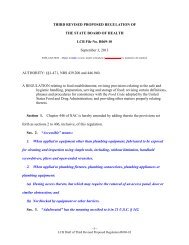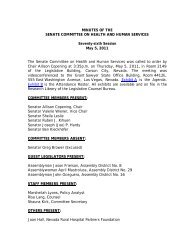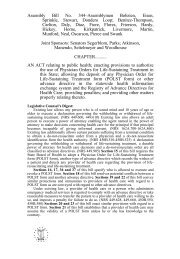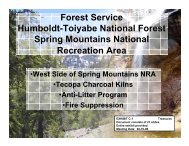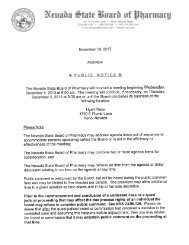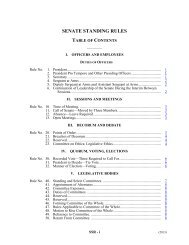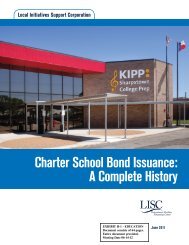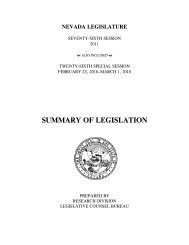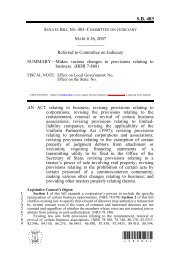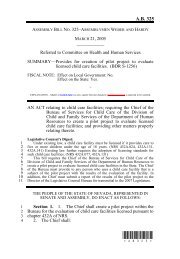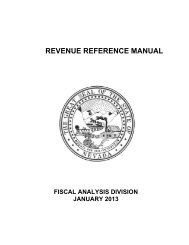Nevada Pre-Kindergarten Standards
Nevada Pre-Kindergarten Standards
Nevada Pre-Kindergarten Standards
Create successful ePaper yourself
Turn your PDF publications into a flip-book with our unique Google optimized e-Paper software.
<strong>Pre</strong>-<strong>Kindergarten</strong> <strong>Standards</strong>: Creative Expression<br />
Content Standard 1.0: Creative Thinking- Approaches to Learning through Creativity<br />
Indicator CT: Creative Thinking<br />
1.PK.1 Use a variety of approaches to solving problems.<br />
1.PK.2 Use a variety of approaches to solving<br />
interpersonal problems in the classroom.<br />
1.PK.3 Adapt environment or abilities to reach a motor<br />
challenge, such as climbing or reaching an object.<br />
Content Standard 2.0: Creative Thinking- Approaches to Learning through Motivation and Persistence<br />
Indicator CT: Creative Thinking<br />
2.PK.1 Select progressively more challenging tasks.<br />
2.PK.2a Demonstrate ability to delay gratification to<br />
complete a larger task.<br />
Creative Expression<br />
Examples: Children will/may...<br />
<strong>Pre</strong>dict outcomes in stories, and to<br />
answer “what if” questions.<br />
Engage in problem solving in a variety<br />
of centers.<br />
Demonstrate awareness of ways to get help<br />
in solving problems.<br />
Solve an increasing number of problems<br />
independently in play and living situations.<br />
Demonstrate ability to classify, compare,<br />
and contrast.<br />
Use an increasing number of details and<br />
more realistic representations.<br />
Try new ideas to solve a problem.<br />
Demonstrate a technique to get something<br />
out of reach (e.g., using tongs to grasp<br />
something off of a tall shelf).<br />
Examples: Children will/may...<br />
Use an assortment of objects to<br />
complete a task.<br />
Combine materials to make the play or<br />
experience more rewarding.<br />
Supportive Practice: Practitioner/Adult will…<br />
When problems occur in the classroom,<br />
model for children how to come up with a<br />
variety of solutions.<br />
Role play situations for children to expose them<br />
to potential problems and how to solve them.<br />
When conflicts occur between children, use it as<br />
an opportunity to teach them how to solve<br />
a problem.<br />
Ask children many open-ended questions<br />
that require more than a yes or no answer.<br />
Ask children to explain how they reach solutions<br />
to problems they encounter.<br />
Encourage children to find more than one way<br />
to solve problems.<br />
Offer a variety of materials in the classroom<br />
that are open-ended in how they can be used<br />
(e.g., blocks, art materials, etc.).<br />
Have a variety of tools (e.g., manipulatives,<br />
measuring tools, and magnifying glasses, etc.)<br />
for math, science, and other cognitive areas.<br />
Allow children to use things in the classroom<br />
environment to adapt to challenges (e.g., using<br />
a large block as a stepstool).<br />
Supportive Practice: Practitioner/Adult will…<br />
Provide children with large amounts of time<br />
to explore and work with classroom materials.<br />
Permit children to choose activities that are<br />
of interest to them.<br />
53



